Sandro Botticelli: "Primavera" (1478). "Primavera" in Italian means "Spring." In
this wonderful painting by Botticelli, Mercury is depicted at far left. At the
center is Venus, on Venus' left the three Graces, and on her right the goddess
Flora. At the far right of the painting is the wind god Zephir pursuing the nymph
Chloris. Zephir's breath cause the nymph to sprout flowers from her mouth.
Click on image for full size
Image courtesy of Planet Art.
Apollo
In Greek mythology, Apollo was the son of Jupiter(in Greek Zeus)
and Leto (Letona).
He was the god of the Sun, logic, and reason, and was also a fine musician and healer.
Leto travelled all over Greece to find a place to give birth to Apollo. She finally came upon an island named Delos. The island agreed to allow the birth of Apollo if he in turn founded a temple on the island. Leto agreed, and when Apollo grew up, he changed Delos into a beautiful island.
He was known as the god who could foretell the future. His most famous sacred place was at Delphi, site of the Oracle of Delphi.
Apollo was very intelligent, as seen in a story with Mercury. As a young baby, Mercury was also very cunning. He tried to steal Apollo's cattle, and tricked Apollo by forcing the animals to walk backwards. This way, the footprints made it appear as if the cattle were walking the other way.
Eventually, a trial was held in front of Zeus. Mercury admitted he had stolen the cattle. He showed Apollo where they were hidden. Mercury offered his lyre as a present, and so the two became good friends.
You might also be interested in:
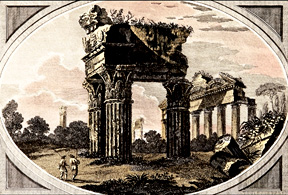
In Roman mythology, Jupiter (Zeus in Greek mythology) was the king of heaven and Earth and of all the Olympian gods. He was also known as the god of justice. He was named king of the gods in the special
...more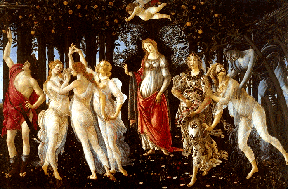
Zephyr was the Greek god of the west wind, which was considered the gentlest wind. The colder north wind was called Boreas. The warm west wind indicated the coming spring season awaking the Earth after
...more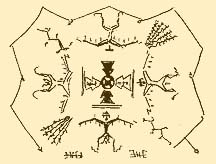
Ahsonnutli was the sky father and chief deity of the Navajo Indians. He created heaven, Earth, and the sky. Each of the four cardinal directions was supported by a giant. Each direction was also associated
...more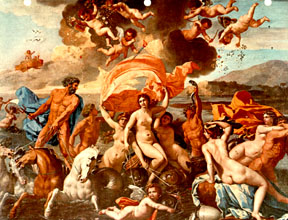
Amphitrite was one of the fifty Nereids, the attendants of the sea-god Poseidon. Poseidon (Neptune) had fallen in love with Amphitrite after seeing her dancing on the island of Naxos. Amphitrite rejected
...more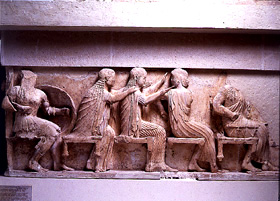
Aphrodite was the Greek goddess of love and beauty. She was known to the Romans as Venus. There were actually two different Aphrodites, one was the daughter of Uranus, the other the daughter of Zeus and
...more
In Greek mythology, Apollo was the son of Jupiter(in Greek Zeus) and Leto (Letona). He was the god of the Sun, logic, and reason, and was also a fine musician and healer. Leto travelled all over Greece
...more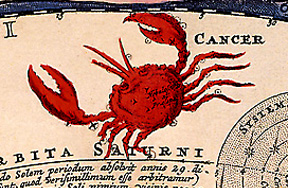
According to an ancient Greek legend, the figure of a gigantic crab was placed in the nighttime sky by the goddess Hera to form the constellation Cancer. Hera was the jealous wife of the sky god, Zeus.
...more













